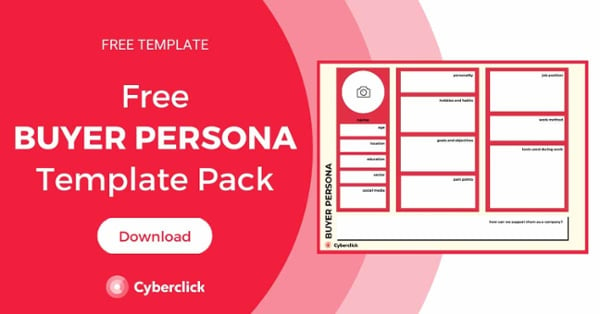By Laia Cardona, on 17 August 2021
The target market is an idea as old as marketing itself. After all, a brand's products or services can't fit everyone. For marketing to be effective, it’s necessary to target a specific group of people with specific needs. Being clear about your target helps to focus your marketing plan and get a better return on investment.
Thanks to the various digital marketing platforms available today, it's possible to obtain a great deal of data about your target audience and make very precise segmentations to personalize your communication as much as possible.
In order to for you to achieve the best results, let's take a look at what exactly the target is and how you can define it according to 5 key variables.

Target Market Definition
In marketing, the target market refers to the group of consumers whose characteristics, desires, and needs are aligned with the products and services offered by a particular brand. This group is also sometimes referred to as a target audience or market niche.
What Is Target Marketing?
Target marketing consists of dividing a market into segments and focusing campaigns on one or several of them in particular. This makes it easier to promote and distribute products or services.
Sometimes a brand's target market is not static, but evolves to adapt to new market trends. For example, McDonalds has traditionally targeted teenagers and families with children. This approach was reflected in products such as the Happy Meal (a meal designed specifically for children with a toy included) and in the design of its facilities, which included free WiFi for parents and recreational areas for children. But in recent years, McDonalds has identified another compelling target market, the millennials. That's why it has made an effort to diversify its menus to include healthier and more sophisticated options, such as salads and premium coffees.
In the digital marketing environment, you can use the segmentation options offered on different advertising platforms to direct campaigns to the users that you’re most interested in. These platforms also allow you to track the results of your ads and how people interact with them on different channels, thus allowing you to identify market segments. This helps you align all of your marketing efforts to reach the right target market.
How to Define a Target Market: 5 Key Building Blocks
1. Demographics
Demographic segmentation is one of the classic segmentation tools. There are many key demographics you can use to segment and define your audience, but some common ones include the following:
- Age: The age of the target market will set the tone of the campaign, the values, and the channels used. In the case of children, you must take into account that parents are the ones who make the purchase decisions, so campaigns must be attractive to both groups.
- Gender: Nowadays, there is a growing push for inclusive campaigns that do not adhere to classic gender roles (for example, not directing cleaning products exclusively to women) or antiquated ideas of gender. Bearing this in mind, there are always products that will be directed to a specific identity due to their characteristics. It's beneficial to understand your target market's general identity so that you can correctly orient the campaign without falling into stereotypes.
- Family situation: Married, single, with or without children, etc. With the current segmentation options, you can get extremely detailed. For example "newly married heterosexual couples" or "parents of children between 1 and 3 years old."
2. Location
Where do the people in your target market live?
Sometimes, companies, like an ecommerce that is trying to reach a global market, may not have one specific target location. In other situations, companies may only be interested in users who live within a 5 mile radius of one of their physical stores.
If you want to reach a global market, you will still have to segment the target market, since a campaign that get great results in Madrid will not necessarily work the same way in Tokyo. At the very least, target marketing on a global level must take into account language and cultural factors.
3. Socio-Cultural Profile
Socio-cultural factors will go a little deeper into the demographics of your target, detailing aspects like:
- The economic class they belong to (and therefore their purchasing power).
- Educational level and languages.
- Profession. In the case of B2B companies, this factor is absolutely key, since you will want to focus on the decision makers in a particular sector or company.
- The values and beliefs. For example, nature lovers, pet owners, people with an urban lifestyle, etc.
4. Digital Profile
To a certain extent, the digital profile of your target will be linked to their age. From Gen Z, who are more attached to their phones, to older people, who have just opened a Facebook account to stay in touch with their family.
You need to identify which digital channels your target audience regularly uses (which is their preferred social network) and their online habits, especially in terms of purchasing decisions (do they research on Google before choosing a product or do they ask for recommendations on Twitter?)
5. Needs
Last but not least, you have to understand what your target needs and how you can respond to that need with your products and services. This is a fundamental part of designing your buyer persona.
It’s crucial to know the value your brand can bring and how it can make people's lives better. Generally, people are looking for something that solves a problem or improves an aspect of their day-to-day lives. Your marketing should make it clear what your products or services can do for your potential customers.
With these 5 building blocks you should be well on your way to defining a target market and creating an effective digital marketing strategy.


